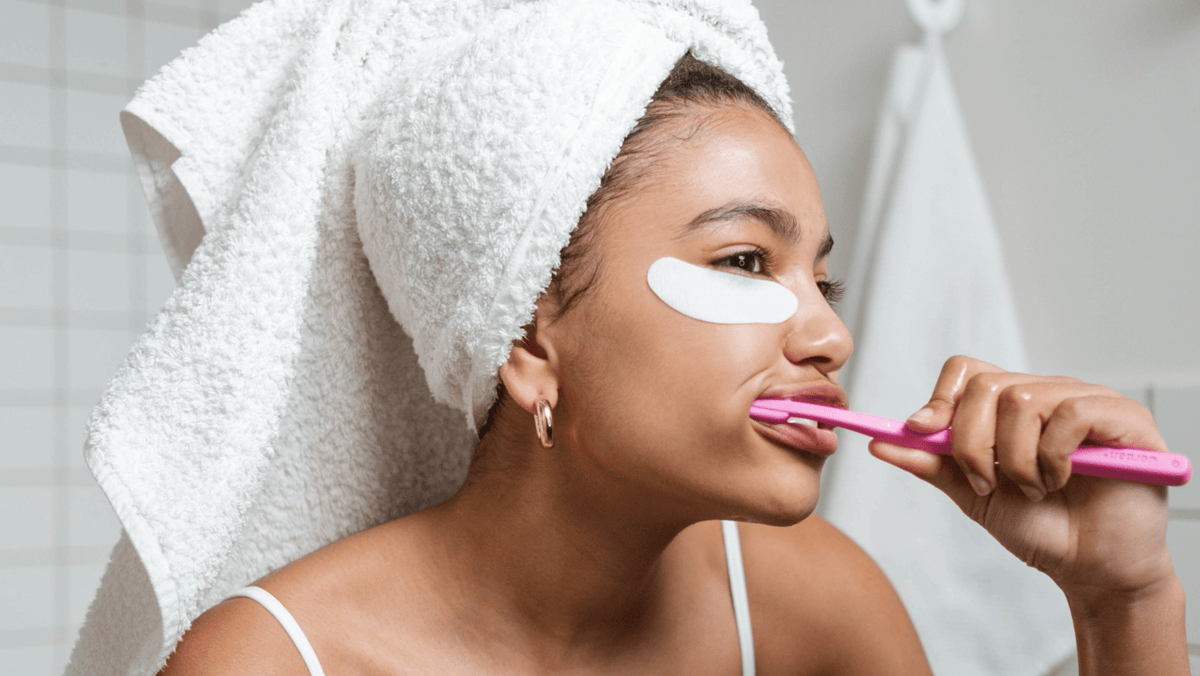The concerns over nanoparticles are understandable especially as they become more common in cosmetics such as sunscreen and toothpaste. In this blog post we delve into what exactly are nanoparticles and what's the deal with nano hydroxyapatite.
What is Hydroxyapatite?
Hydroxyapatite is the exciting new superstar of the dental world, and it's not hard to see why! Just like fluoride, it helps fortify enamel but without any pesky health concerns. It is a fantastic mineral that naturally occurs and is found in bones and teeth. It's like the superhero of minerals, providing mega-strength and rock-solid rigidity to our skeletal structure, making our bones and teeth super tough and resilient.
You can find hydroxyapatite in toothpaste in two forms: hydroxyapatite (HA) and nano hydroxyapatite (nHA).
What are Nanoparticles?
Just imagine tiny particles that have at least one dimension in the nanometer scale, typically ranging from 1 to 100 nanometers (nm) – that's one billionth of a meter! They can be made from all sorts of materials like metals, metal oxides, polymers, or carbon-based materials.
What's really fascinating about nanoparticles is that their small size gives them special and unique qualities. You see, because they're so tiny, they have a higher surface area compared to their volume. And guess what? This leads to some pretty cool physical, chemical, and biological properties that differ from their bigger counterparts. We're talking about the nanoscale and quantum effects – it's like a whole new world!
Nanoparticles have raised concerns regarding their potential impact on human health and the environment. As a result, extensive research is still being done to understand their behaviour, toxicity, and safe handling.
Should i be worried about nanoparticles in topical products like toothpaste?
Campaigners are warning that new research into the safety of nanoparticles is not enough. They point out there have been many studies that show potential health risks for these particles, but environmental groups say more work needs to be done before we can rest easy with our topical products that contain them.
Nano-particles are most often used in the form of zinc oxide to improve sunscreen protection from UVA, and in toothpaste in the form of nano-hydroxyapatite to remineralise enamel. The concern among campaigners remains that nanoparticles may damage living cells and organs due to their size; they're too small for our body's natural immune system or enzymes that break down harmful molecules like cancerous growths on skin cells.
The European Union Bans Nano Hydroxyapatite......sort of
On February 11, 2022, the European Commission notified the World Trade Organisation (WTO) of the future ban of 12 nano-ingredients including nano hydroxyapatite following the Scientific Committee on Consumer Safety SCCS opinion on nano hydroxyapatite due to potential safety concerns.
On September 16, 2022, the European Commission officially published the Commission Regulation (EU) 2022/1531, namely the Omnibus Act V which prohibits & restricts nano ingredients within products sold within the the european union.
In March 2023 the European Commision concluded that based on the data provided by the SCCS, nano hydroxyapatite can be used in consumer products with a concentrations of up to 10% in toothpaste, but with some very specific safety requirements.
- The particles must be composed of rod-shaped particles of which at least 95.8% (in particle number) have an aspect ratio less than 3, and the remaining 4.2% have an aspect ratio not exceeding 4.9;
- the particles are not coated or surface modified.
- Are not needle shaped
Is Nano-Hydroxyapatite Safe?
Scientific consensus regarding the safety of nano-hydroxyapatite remains elusive. While some studies have indicated potential inflammation and DNA damage, others have found no adverse effects. The lack of decisive data has resulted in an ongoing debate among scientists, regulators, and industry representatives.Should i keep using products with nanoparticles?
It's important to do your own research and decide what is right for you.
Hydroxyapatite Toothpaste (no nano particles)

